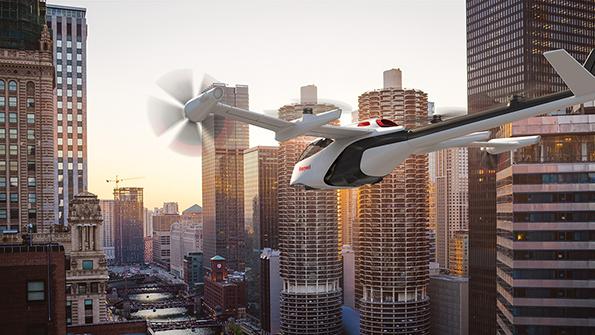Poll: Is Urban Air Mobility Closer Than You Think?

Uber is launching a three-year, “multimillion-dollar” community engagement plan to pave the way for the anticipated start of commercial urban aerial ride-sharing services in its pilot cities of Dallas, Los Angeles and Melbourne, Australia.
A key part of the plan will be test flights of a prototype electric vertical-takeoff-and-landing (eVTOL) vehicle over a city this year to measure noise levels and gauge public reaction. Uber has not yet said where and when the flights will be conducted, or with which vehicle.
“Closer than you think” is an unofficial mantra of the nascent urban air mobility (UAM) industry, and two events in the first weeks of 2020 underline the progress made in little more than a decade.
Do you agree with the sentiment? Vote below to voice your opinion.
This is an interactive poll, please allow some time for it to load.
Comments
Evaluate this projected UAM timeline side by side with the adoption of the automobile by the general public as the preferred transportation option in the early 20th century: Henry Ford’s Model T, and all that followed for almost 50 years ( until the industry begrudgingly adopted the padded dash and simple seat belt : search Col. John P. Stapp) , were largely untested experimental vehicles and we , the general (buying) public, the volunteer unpaid crash test dummies with annual US fatalities rising from 0 to over 50,000 in this timeframe. The same phenomenon with UAM’s could never occur in today’s reaction oriented, socially networked environment: a single operational UAM crash and the first fatalities will set off a wave of groundings, investigations re-evaluations etc., similar to that which has occurred in the manned spaceflight industry, with the shuttle disasters. Today’s zero tolerance for risk, fanned by instant media sensationalism and second guessing of every move and litigation would have mired us in the horse and buggy phase for years. UAM’s and real public space flight are still fiction while we , the general public soldier on as the crash test dummies for the auto industry (36,000 deaths in 2018 - making progress). I would love to utilize an UAM here in Dallas (Uber Central) and go to space but that will likely never happen. Glad I still love driving my cars and am allowed to accept the personal risk ( and thank you Col. Stapp for improving the odds)
Sent from my iPhone
I think the question what most people are answering is will ubiquitous Urban Air (ie you and me walking to eVTOLs on our street corners and using them like cars/public transit) be available soon? And my answer to that is "No" - or at least 15+ years away before all the cost, safety and noise concerns have been satisfied and people are comfortable getting on them.